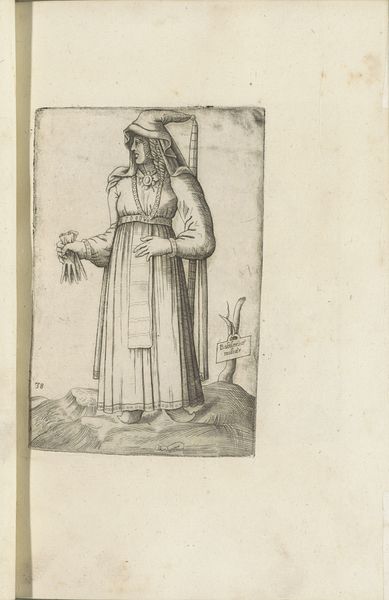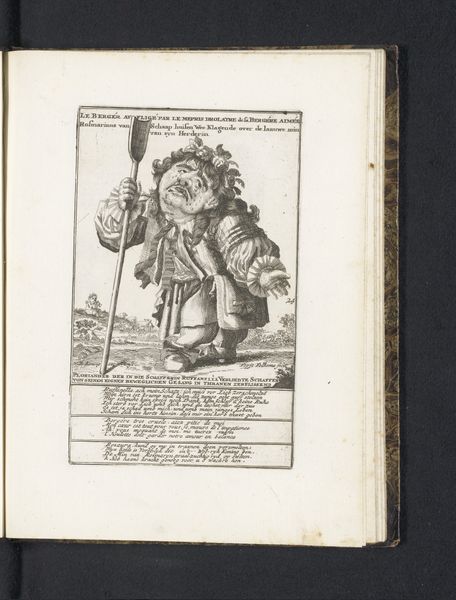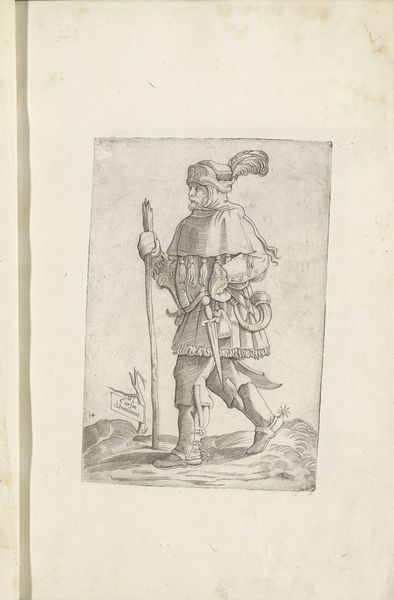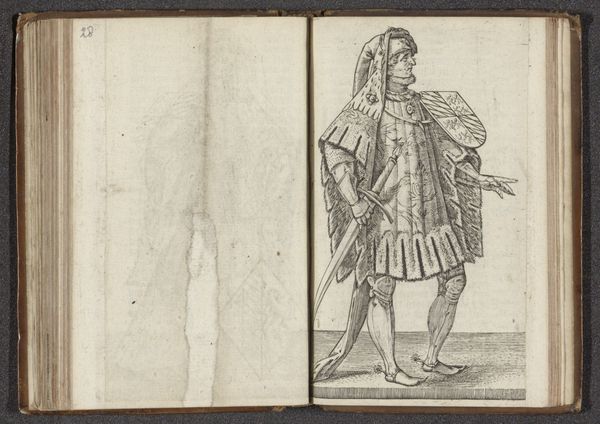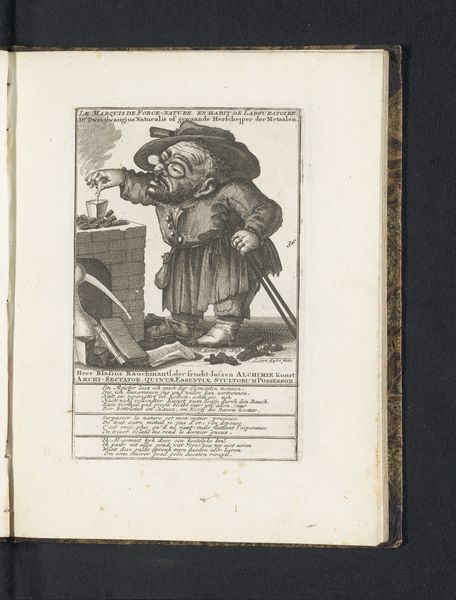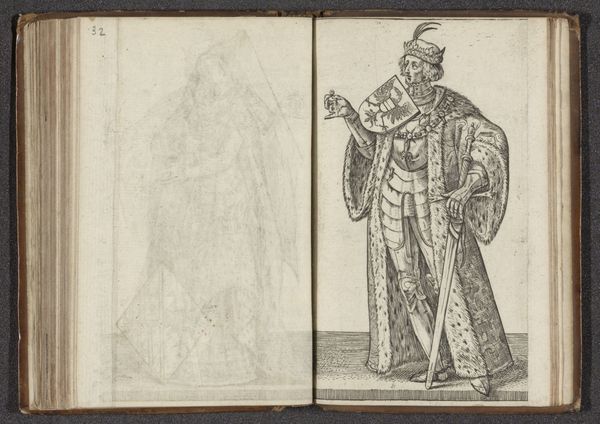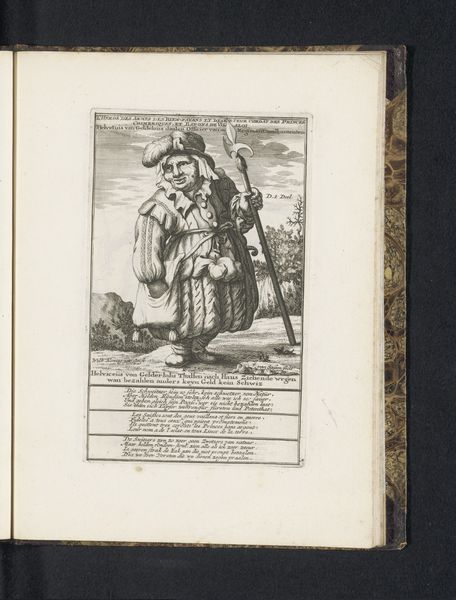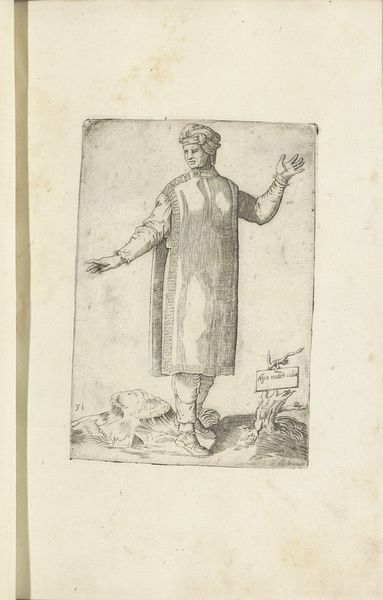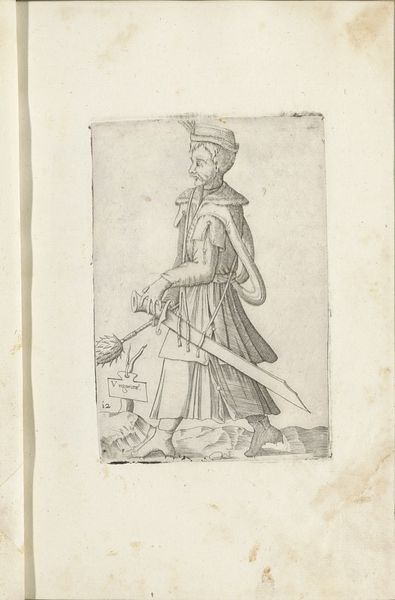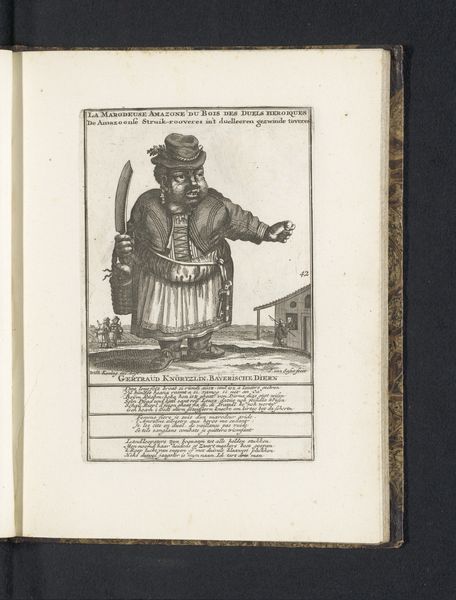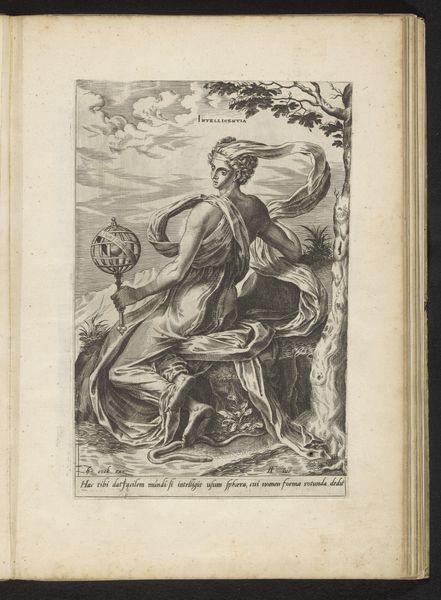
print, woodcut
#
portrait
# print
#
figuration
#
woodcut
#
northern-renaissance
Dimensions: height 100 mm, width 68 mm
Copyright: Rijks Museum: Open Domain
Curator: The artwork before us, titled "Geestelijke," and believed to have been created between 1490 and 1538 by Hans Schäufelein, presents a compelling image of a spiritual figure through the medium of a woodcut print. Editor: It strikes me immediately by the contrast between the ornately rendered figure and the relatively sparse landscape backdrop. There's a tension created by the details in the clothing compared to the minimalist clouds and foliage, a kind of figure-ground separation pushing the image forward. Curator: Indeed. The details of the figure's garments—the folds, the embellishments—suggest a high level of social status, a key role often attributed to the clergy during that period, and enabled through specific techniques in woodcut traditions. It's important to recognize prints, like this one, served as a mode of instruction to those who were not able to read and were often circulated more broadly than traditional paintings or manuscripts. Editor: And technically, notice the almost perfect balance achieved with lines that form the subject. The sharp and precise way the lines capture the intricacies of his vestments creates movement while emphasizing volume. I'm wondering if it speaks also of spiritual authority? Curator: I'd say so. This figure’s raised hand can signal several meanings. A symbol for teaching and blessing was significant during a tumultuous period where reformers challenged religious orthodoxies. Prints, and certainly, portraits such as this, helped solidify an ideological role. The print then serves a form of power. Editor: Power is so present throughout the image; I hadn’t quite noticed that before. Curator: The circulation of such images provides insight into Northern Renaissance values—particularly religious expression. And of course, how socio-political events shape the artist's choices—what images were commissioned or disseminated is key. Editor: So while I may focus on visual tension and balance, seeing how social influence defines those choices adds new dimensions to the viewing experience.
Comments
No comments
Be the first to comment and join the conversation on the ultimate creative platform.
